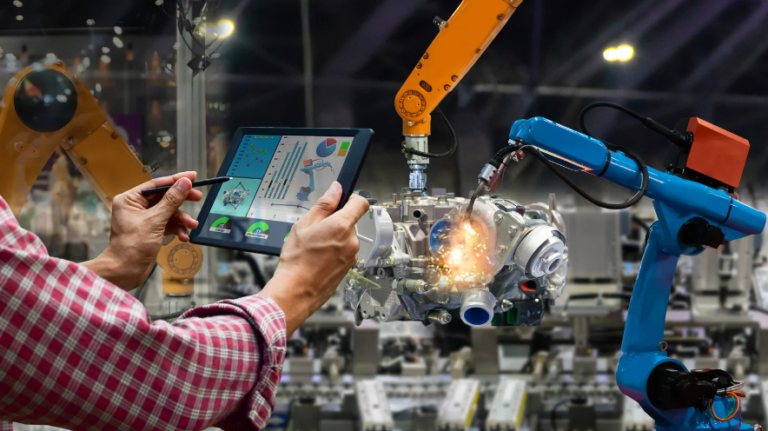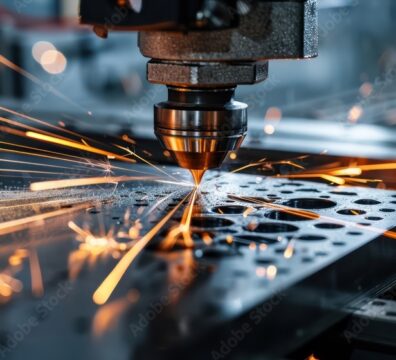In today’s fiercely competitive manufacturing landscape, cost management is a critical component for maintaining profitability and operational efficiency. A dynamic cost modelling approach, designed to bridge the gap between engineering data and financial metrics, enables balanced decision-making that is optimised for cost and risk.
Manufacturing environments today are complex, involving intricate processes that require careful management of resources, production efficiency, product quality, environmental impact, and inventory levels. Traditional cost estimation methods, such as Activity-Based Costing (ABC), often fall short in these dynamic environments because they rely on extensive data acquisition and are typically static, case-based, and labour-intensive.
In contrast, a dynamic cost estimation model offers a more flexible and real-time approach. By translating five key performance indicators (KPIs) – productivity, efficiency, quality, environmental impact, and inventory – into a continuous cost function, this approach can provide a real-time financial representation of manufacturing performance. This not only facilitates more accurate decision-making but also aligns the priorities of engineers, managers and financial departments toward a common goal: profitability.
Bridging the Gap Between Engineering and Finance
One of the significant challenges in manufacturing is the communication gap between different departments – particularly between engineering and finance. Engineers are focused on optimising production processes and ensuring product quality, while financial departments are concerned with cost control and profitability. A dynamic cost estimation model can serve as a common language that bridges this gap by translating operational data into financial terms.
The process begins by collecting real-time and historical data from various stages of the manufacturing process. This data is then used to calculate the costs associated with each of the five KPIs. For example, the cost of poor product quality is captured through metrics like yield loss and defect rates, while environmental impact costs are quantified through energy consumption and emissions data. By integrating these diverse metrics into a single cost function, the model provides a holistic view of the manufacturing process in monetary terms.
Benefits of the Dynamic Cost Model
The dynamic cost estimation model offers several key benefits that can significantly enhance manufacturing operations:
- Real-Time Decision Support: The model provides near real-time cost estimates, allowing decision-makers to respond quickly to changes in the production environment. For instance, if a machine begins to underperform, the model can instantly calculate the financial impact, enabling prompt corrective actions.
- Improved Resource Utilization: By linking cost directly to resource utilisation, the model helps identify inefficiencies and optimise the use of machinery, labour, and materials. This leads to lower operational costs and improved overall equipment effectiveness (OEE).
- Enhanced Product Quality: The model’s ability to quantify the cost of defects and rework supports the implementation of Zero-Defect Manufacturing (ZDM) strategies. This not only improves product quality but also reduces waste, leading to cost savings and a smaller environmental footprint.
- Strategic Planning and Forecasting: The model’s predictive capabilities allow for more accurate forecasting of production costs under various scenarios. This supports strategic planning by providing insights into the potential financial outcomes of different operational decisions.
Dynamic cost modelling in action
The effectiveness of the dynamic cost estimation model is demonstrated through case studies in the tungsten metallurgy and microelectronics manufacturing industries. These case studies highlight the ability of dynamic cost modelling to adapt to different production environments and its accuracy in estimating costs.
In the semiconductor manufacturing case, the model has been used to optimise the production of printed circuit boards (PCBs). Dynamic cost modelling can calculate real-time cost estimates that enable the identification of optimal process parameters, leading to a reduction in defects and overall production costs. Similarly, in the tungsten metallurgy case, the approach has been shown to help optimise the machining process for tungsten carbide parts, balancing production speed with quality to minimise costs.
These examples underscore the versatility of dynamic cost modelling and its potential to deliver significant cost savings across a range of manufacturing settings.
Challenges and Implementation Considerations
While the benefits of the dynamic cost estimation model are clear, implementing such a system is not without challenges. One of the primary obstacles is the need for high-quality, real-time data. Manufacturing environments often struggle with data silos and inconsistent data quality, which can undermine the accuracy of the cost model. To address this, manufacturers must invest in robust data acquisition and management systems that ensure the integrity and accessibility of data across the organisation.
Another challenge is the integration of the cost model with existing IT infrastructure. Many manufacturers rely on legacy systems that may not be compatible with the latest data analytics and cost modelling tools. A phased approach to implementation, starting with pilot projects, can help mitigate these challenges and demonstrate the value of the model before a full-scale rollout.
Why balancing risk and cost is strategically important
The adoption of a dynamic cost estimation model represents a significant opportunity to enhance decision-making processes and drive operational efficiency. Providing a real-time, financial perspective on manufacturing performance enables a more proactive and informed approach to managing resources, optimising production processes, and improving product quality.
In an increasingly competitive manufacturing landscape, the ability to translate complex operational data into actionable financial insights is a powerful tool. A dynamic cost estimation model offers a practical and effective solution for achieving this, supporting both tactical and strategic decision-making and ultimately contributing to the long-term sustainability and profitability of manufacturing enterprises.
Read the research: Cost-Based Decision Support System: A Dynamic Cost Estimation of Key Performance Indicators in Manufacturing
















